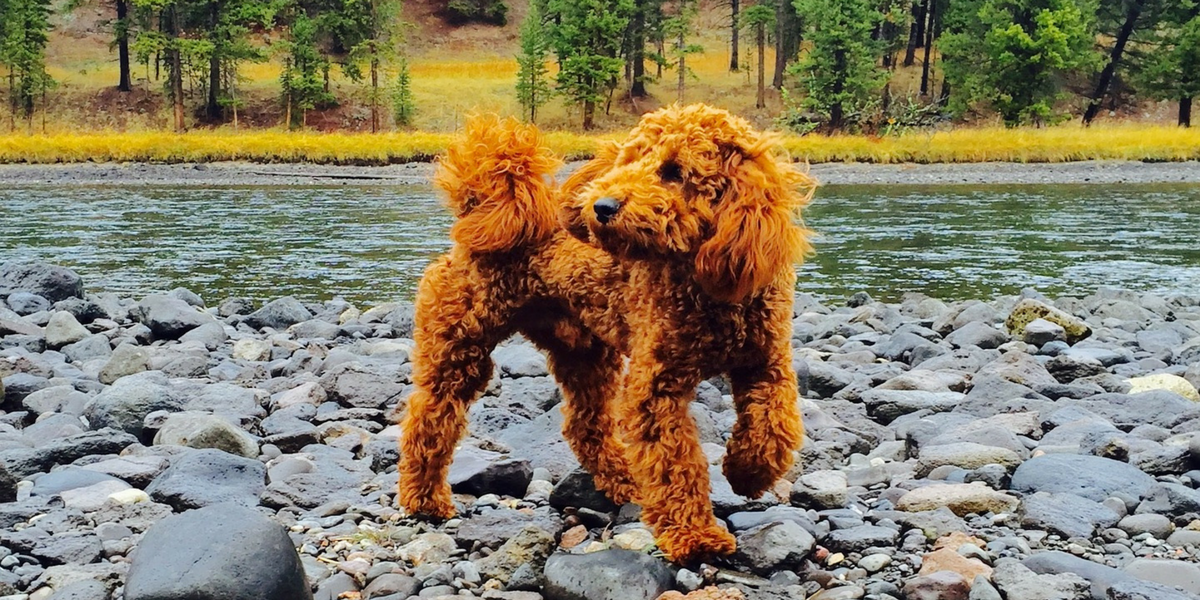Taking too long? Close loading screen.

April 29th
Dogs are very social creatures. This can make it stressful for them when they have to spend time alone.
But learning how to be alone is key to any dog’s training. Your dog will likely always prefer the company of other dogs and people. But that doesn’t mean they have to hate being by themselves.
Here, we’ll show you how you can get started on training your dog to be alone.
Your dog’s crate will be one of the most important tools for teaching them how to be alone. But it can take some time for your puppy to adjust to being locked in a small space.
When your pup first gets home, try to get them used to their crate by leaving them alone for short periods. Begin with five minutes, and slowly work your way up to half an hour. If your dog is responding well, you can leave them for longer periods.
Over time, your puppy will see that being alone doesn’t have to be scary. And once they’re fully housetrained- usually in about a year- you can consider leaving them alone in the house.
Being alone often stresses dogs, as they may believe that you aren’t going to return. One good way of making your puppy less anxious is to feed them. Your dog will associate being alone with eating, making them less stressed whenever you leave.
However, you shouldn’t feed your dog in a crate and leave them for long periods. This will increase the chances that they use their crate as a bathroom. This will make it harder to housetrain them, and can also make them anxious.
Only feed your dog in their crate if you plan on letting them out in less than an hour.
Another great way of helping your dog get used to being alone is to teach them that rest time can be pleasurable. You can do this by interrupting play time with short breaks. Make your dog rest for short periods by having the lie down.
Pet them and praise them, and give them a treat. Start with short breaks of just a few seconds, and slowly work your way up to a few minutes. Your dog will associate resting with the pleasure that comes with playing.
Once you put them in their crate, they’ll be more comfortable lying still and resting.
Many dog owners smother their puppy in hugs and kisses before they leave, thinking that this love will help the puppy feel better. However, this extra attention may actually have the opposite effect, and make it harder for the puppy to adjust to your absence.
By giving your dog so much love, you are getting them excited and attached. Once you leave, your departure will feel sudden, adding to your dog’s anxiety.
Instead, you should try to give your dog less attention than usual before you leave- at least when you’re training them to be alone. This will serve as a good lead in to the period when they are in their crate alone.
Another good way of helping your puppy adjust to being alone is to pretend like you are going to leave. Put on your coat, or pick up your keys. Your puppy likely associates these items with you leaving. But then stay at home, so that your puppy stops associating these objects with being alone.
This will make them calmer when you do leave, and make it easier to get them in their crate.
It will be hard for most puppies to adjust to being alone. Over time, however, they will get used to alone time, and will stop pawing and crying whenever you leave the room.
In some cases, however, dogs will have more serious reactions to being alone. They may begin to paw violently at their crate door and continue to cry and yelp until you return. These can be signs that your dog has a serious case of separation anxiety.
Here are some symptoms of separation anxiety:
If your dog has any of these symptoms, you may have to take a much gentler approach to their training. Try to leave them for very short periods, and pet and comfort them as soon as you return.
And if these gentle training methods don’t work, you should consider speaking to your vet. You can also call a professional dog trainer, who can help you provide more structured training to your puppy.
If you haven’t found the perfect puppy, you should head over to our puppy finder. We have everything from goldendoodles to cavapoos, so you’ll be able to find the right dog for you.
Find the Perfect Puppy